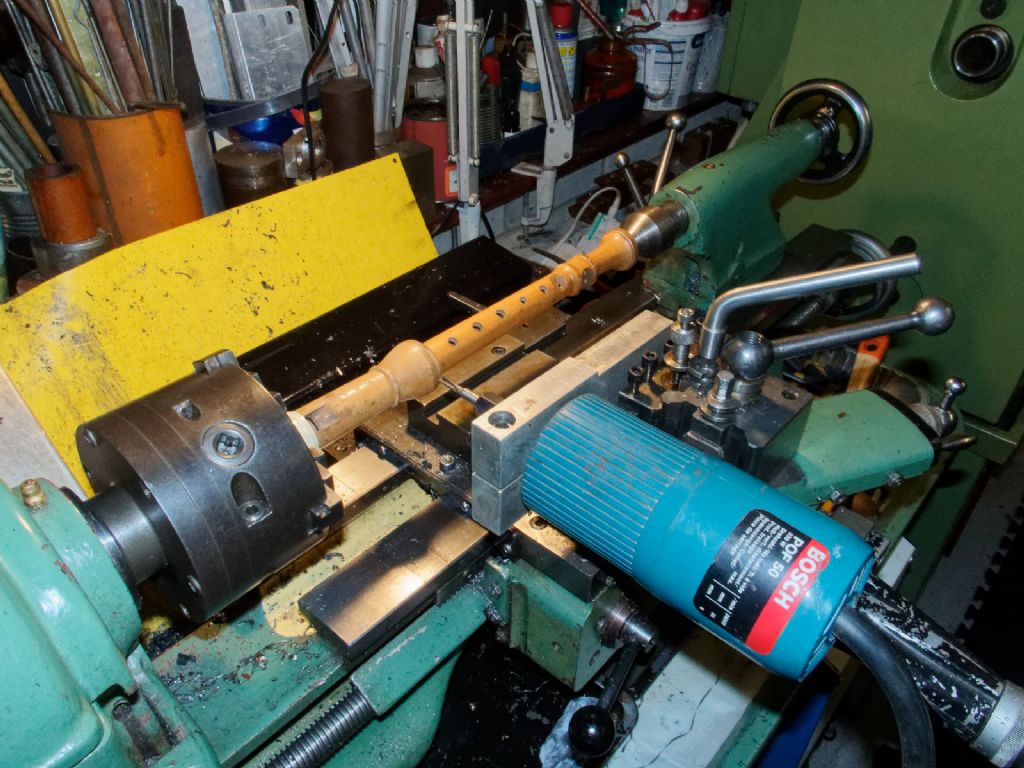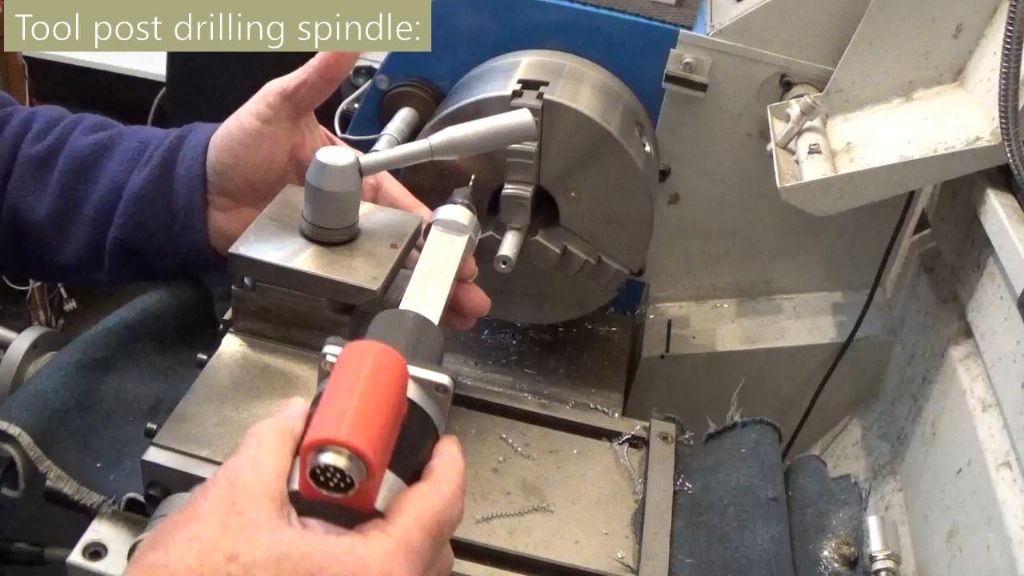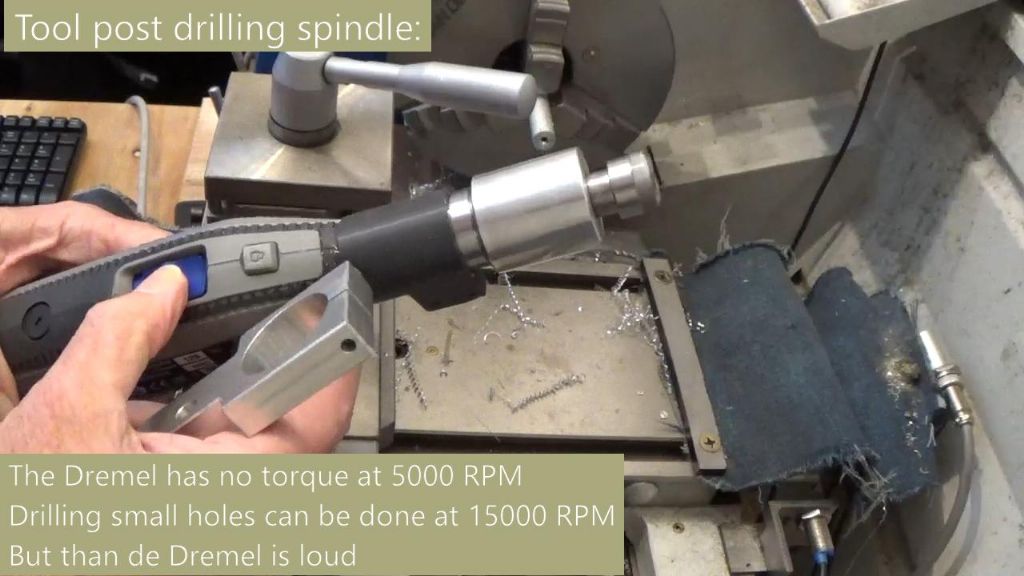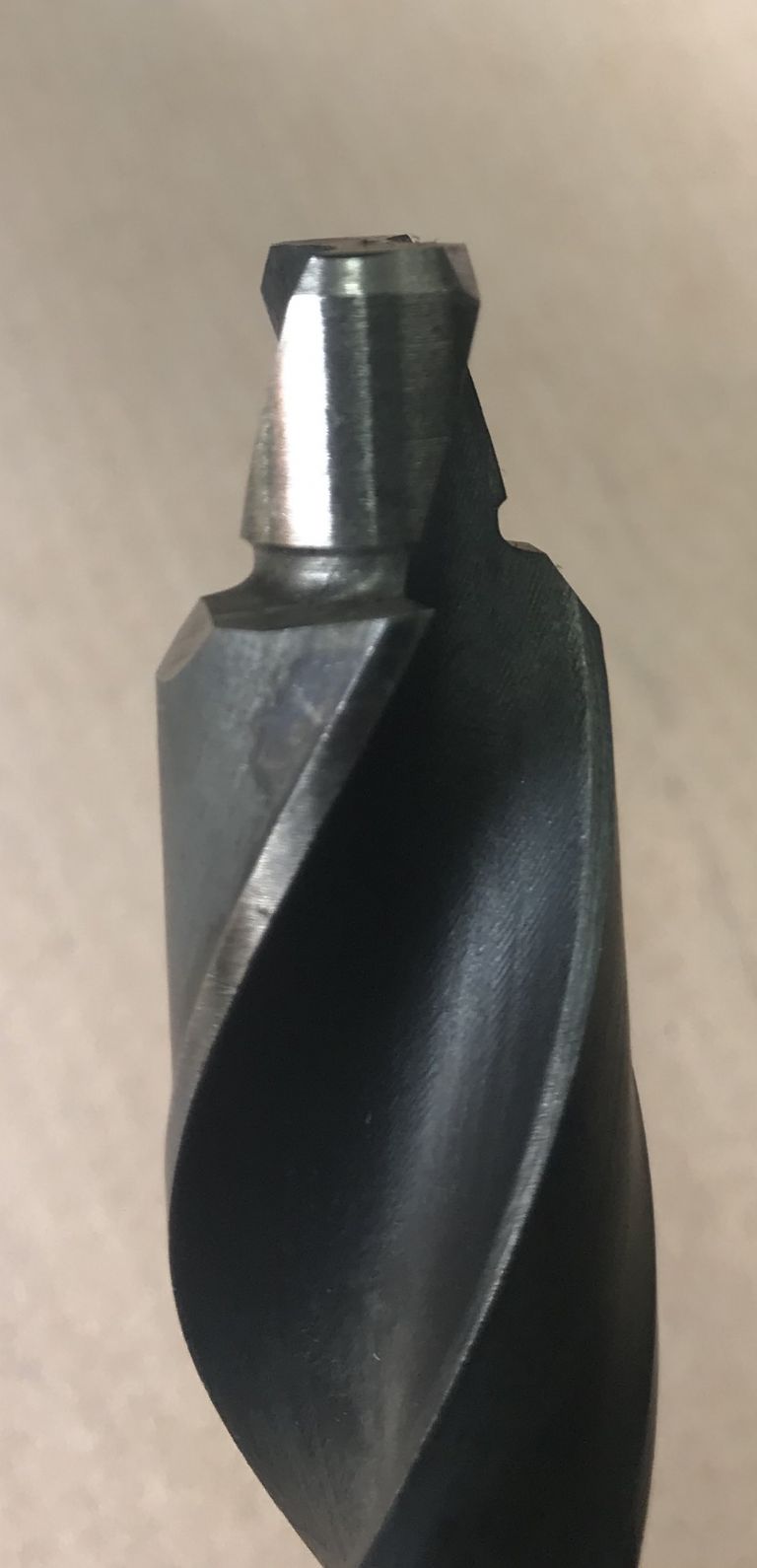Posted by Vic on 07/02/2023 13:27:51:
Posted by Hopper on 07/02/2023 13:18:16:
Well there you go. They just look smaller because the outer part has been ground away. When you think about it, the flutes still have to go down to the size of the chisel point.
Still seems like an awful lot of HSS to grind away with a mounted point in a router, with an interrupted cut over the flutes. That kind of grinder set up is usually for taking a few thou off for finishing purposes. You might be better off to make up something to hold a pistol drill up square to your six inch bench grinder so the drill rotates the bit and the six inch grinding wheel does the work. I imagine it would go a lot quicker that way.
There are lots of ways to approach the job. I wanted something a little more predictable/accurate though. If necessary I’ll resort to somehow jigging my bench grinder.
**LINK**
**LINK**
Looks like he has it all figured out. Simlar idea, hold the bit in pistol drill by hand and run it up against the belt sander. Then you could finish it off in th elathe.
But unless you are drilling many dozens and hundreds of these stepped holes, the more usual way to do it would be to drill the small hole then use a counterbore bit to drill the larger hole. Sets of counterbore bits are available stupid cheap from that large manufacturing country far to the east of you.
Or you can even drill the larger hole with a regular larger drill bit and then finish it off with a drill bit ground to a flat bottom end.
But if you plan to be drilling more than a few dozen such holes, then the step drill would be a definite timesaver.
ega.













